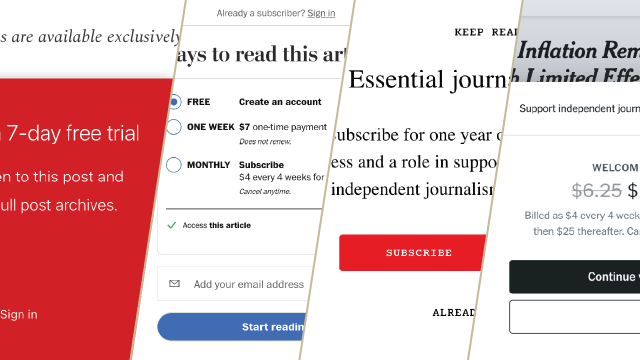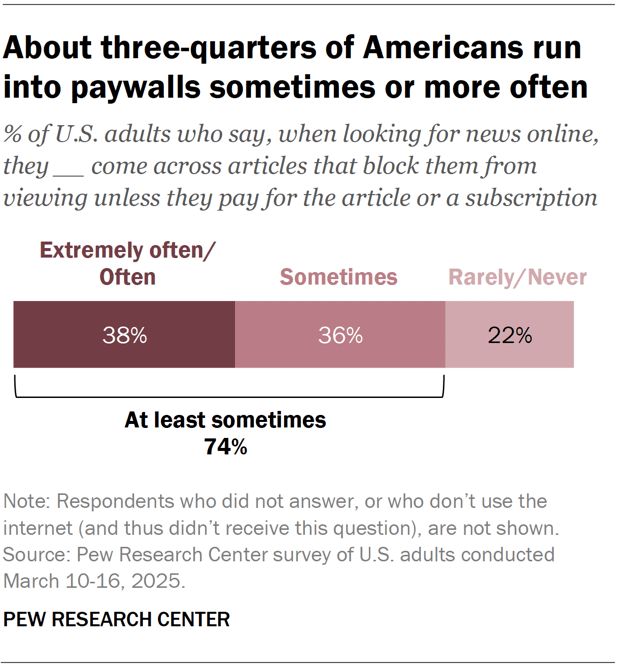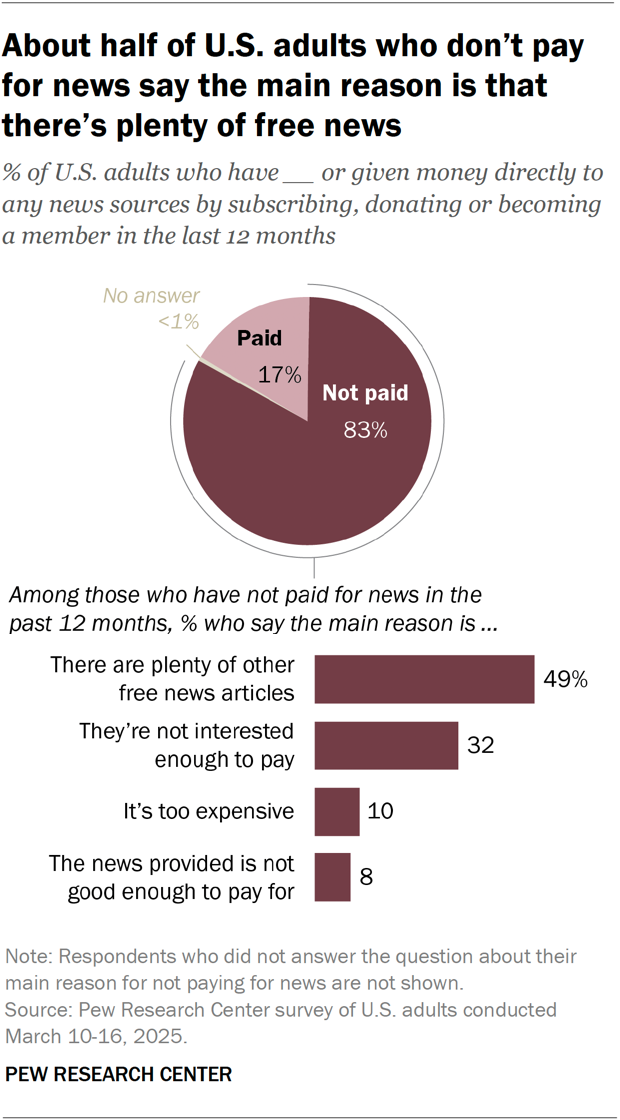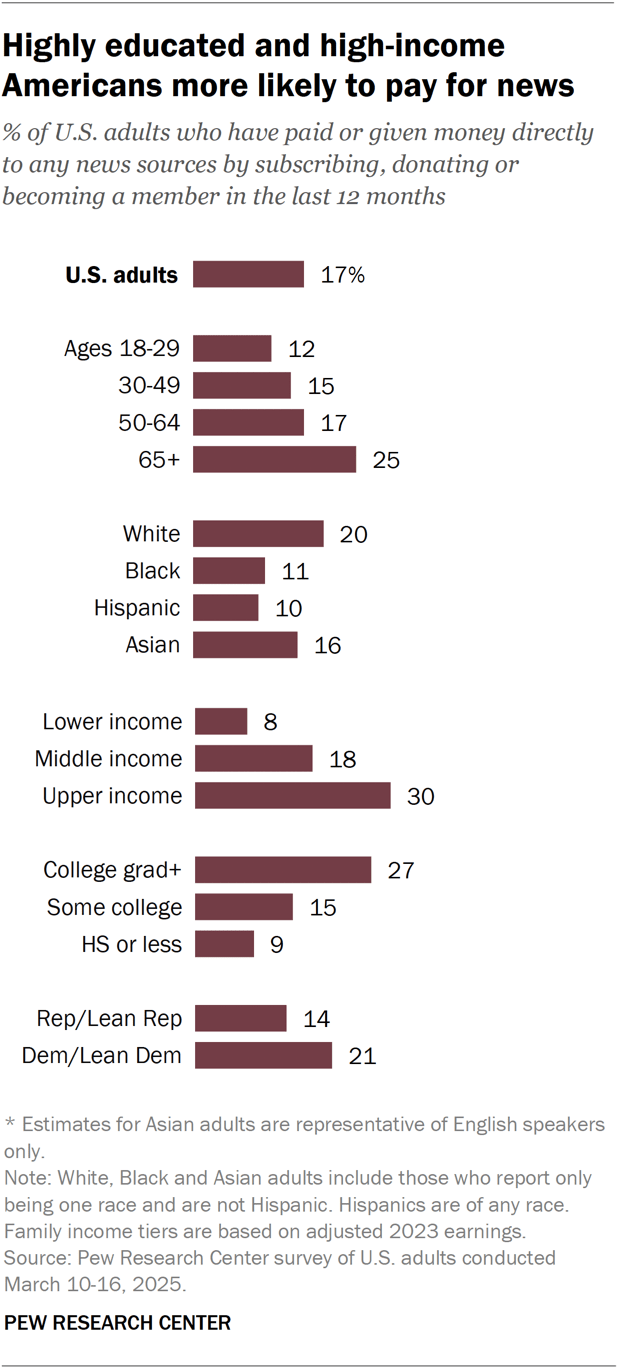
Newspaper revenue has been in decline for decades, and most Americans now prefer to get news from digital devices. In this environment, many news organizations – and not just newspapers – put paywalls on their websites or apps, blocking access to articles or other content unless news consumers pay or subscribe.

The vast majority of Americans (83%) say they have not paid for news in the past year, according to a Pew Research Center survey conducted in March. Another 17% say they have directly paid or given money to a news source by subscribing, donating or becoming a member during that time.
At the same time, 74% run into paywalls at least sometimes when they are looking for news online. This includes 38% who say they come across paywalled articles extremely often or often.
What people do when they reach a paywall

The survey also asked anyone who said they ever come across paywalls what they typically do first when that happens.
Just 1% say they pay for access when they come across an article that requires payment.
The most common reaction is that people seek the information somewhere else (53%). About a third (32%) say they typically give up on accessing the information.
Why Americans don’t pay for news

Among the 83% of U.S. adults who have not paid for news in the past year, the most common reason they cite is that they can find plenty of other news articles for free. About half of those who don’t pay for news (49%) say this is the main reason.
Indeed, many news websites do not have paywalls. Others have recently loosened paywalls or removed them for certain content like public emergencies or public interest stories.
Another common reason people don’t pay for news is that they are not interested enough (32%). Smaller shares of Americans who don’t pay for news say the main reason is that it’s too expensive (10%) or that the news provided isn’t good enough to pay for (8%).
Which groups are more likely to pay for news?

Overall, 17% of U.S. adults pay for news. However, highly educated adults, Democrats and older Americans – among other demographic groups – are more likely to have paid for news.
For example, 27% of college graduates say they have directly paid a news source by subscribing, donating or becoming a member in the last year – triple the share of those with a high school diploma or less formal education who have done so.
In addition:
- 21% of Democrats and independents who lean Democratic have paid for news in the last year, compared with 14% of Republicans and GOP leaners.
- 25% of those ages 65 and older have paid for news in the past year, versus 12% of those ages 18 to 29.
- 8% of U.S. adults in the lowest income group paid for news, compared with 30% of those in the highest income group. (For more information about how we define income groups, refer to the methodology.)
- 20% of White Americans have paid for news, about double the share of Black Americans (11%) and Hispanic Americans (10%) who have done so.
Note: Here are the questions used for this analysis, the topline and the survey methodology.